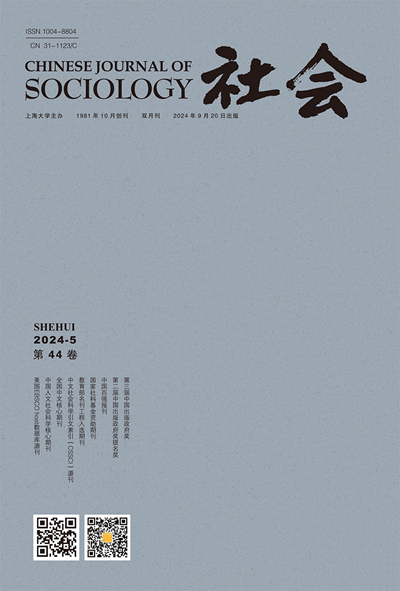没有公众的公共空间:北京大栅栏庭院空间中的国家与个人
IF 1.8
4区 社会学
Q2 SOCIOLOGY
引用次数: 0
摘要
本文通过对北京大栅栏老街区社区形成和庭院空间重组的实验研究,运用社会学干预的方法,探讨了公共空间的意义和公共重建问题。在西方,学者们将公共空间视为具有政治或社会意义的公共生活的一部分。然而,在大栅栏的庭院里,居民们明白公共空间与相邻家庭的共享财产一样重要,与公共生活分离,因为他们经常彼此熟悉但疏远。为了把握这种对公共空间的不同理解,本文首先考察了大栅栏产权的历史变迁。自20世纪80年代以来,大栅栏的庭院就被明确定义为国有城市空间,但在管理上一直被忽视。因此,居民们逐渐侵占了这些国家所有的庭院,并将其分割为私人用途。由于这种侵占行为植根于国家和个人之间的关系,庭院不仅变成了具有特定功能的私有财产,而且成为了各种行为者之间互动的场所。为了揭示这些庭院作为公共空间的复杂性,我们讨论了个人在日常生活中对私人空间的扩张,以及空间建设中临时联盟引发的“公共骚乱”。庭院作为公共空间的复杂性可以通过在大栅栏进行的两次空间重排实验来很好地说明。这两项实验都将强有力的社会干预引入了空间重排:一项试图在庭院中重建社会生活,另一项则致力于庭院中的公共和私人边界。前一个实验以失败告终,而后一个实验成功了。这两个实验的结果告诉我们,公共重建不仅仅是重建人与人之间的社会互动,而是调整国家与个人的关系,建立公共空间中共同生活的规则。本文章由计算机程序翻译,如有差异,请以英文原文为准。
Public space without the public: State and individuals in courtyard space in Dashilar, Beijing
This article discusses the meaning of public space and the problem of public reconstruction by means of sociological intervention through an experimental study of community formation and courtyard space rearrangement in the old neighborhood of Dashilar in Beijing. In the West, scholars regard public space as part of public life with political or social significance. In the courtyards of Dashilar, however, residents understand public space as important as a shared property of neighboring families that is separate from public life, as they are often acquainted with but alienated from one another. To grasp this different understanding of public space, this article first looks into the historical transformation of property rights in Dashilar. The courtyards in Dashilar have clearly been defined as state-owned urban space since the 1980s but have remained neglected in administration. Therefore, residents gradually encroached upon these courtyards that were owned by the state and divided them for private use. As this act of encroaching was rooted in the relationship between the state and the individual, the courtyards were not merely changed into privatized properties with specific functions, but became places for interactions between various actors. To reveal the complexity of these courtyards as public spaces, we discuss the expansion of private space by individuals in their daily life and the “public disturbances” initiated by temporary coalitions in space construction. This complexity of courtyards as public spaces can be well illustrated by two experiments of space rearrangement conducted in Dashilar. Both experiments introduced strong social interventions into space rearrangement: one attempted to rebuild social life in a courtyard, and the other worked on the public and private boundaries in a courtyard. The former experiment ended in failure while the latter was a success. The results of these two experiments tell us that public reconstruction is not just about rebuilding social interactions between people, but also about adjusting the state–individual relationship and establishing the rules of living together in public space.
求助全文
通过发布文献求助,成功后即可免费获取论文全文。
去求助
来源期刊

社会
Social Sciences-Social Sciences (all)
CiteScore
1.70
自引率
0.00%
发文量
6799
期刊介绍:
The Chinese Journal of Sociology is a peer reviewed, international journal with the following standards: 1. The purpose of the Journal is to publish (in the English language) articles, reviews and scholarly comment which have been judged worthy of publication by appropriate specialists and accepted by the University on studies relating to sociology. 2. The Journal will be international in the sense that it will seek, wherever possible, to publish material from authors with an international reputation and articles that are of interest to an international audience. 3. In pursuit of the above the journal shall: (i) draw on and include high quality work from the international community . The Journal shall include work representing the major areas of interest in sociology. (ii) avoid bias in favour of the interests of particular schools or directions of research or particular political or narrow disciplinary objectives to the exclusion of others; (iii) ensure that articles are written in a terminology and style which makes them intelligible, not merely within the context of a particular discipline or abstract mode, but across the domain of relevant disciplines.
 求助内容:
求助内容: 应助结果提醒方式:
应助结果提醒方式:


